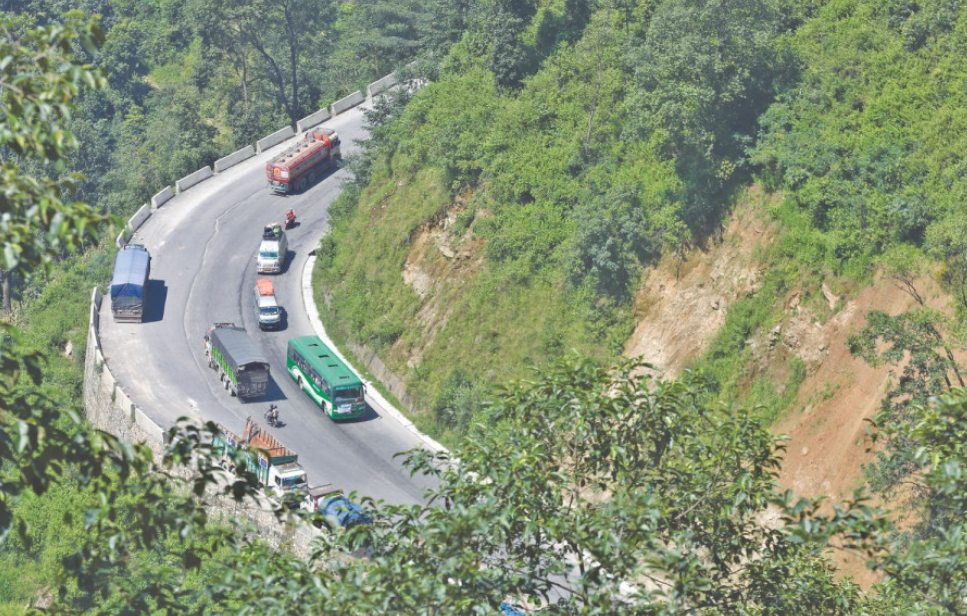
SATV Kathmandu Oct 11: Amid the country’s economic vulnerabilities and the uncertainty following last month’s Gen Z protests, experts have called for a reassessment of Nepal’s planned graduation from the Least Developed Country (LDC) category, citing the country’s lack of readiness.
Nepal is slated to graduate from an LDC to developing country status in November 2026.
Paras Kharel, executive director of South Asia Watch on Trade, Economics and Environment (SAWTEE), in his article titled “Reconsidering Nepal's Imminent Graduation from LDC Status,” says that the deaths and destruction accompanying the September revolution have added to the challenges of graduation.
“This warrants a reconsideration of the decision to graduate—beginning with a serious but swift discussion among stakeholders, followed by the collection of evidence to establish a strong case before the new government, which can formally seek a deferral with the United Nations,” Kharel said.
Graduation entails the partial or complete loss of international support measures such as preferential market access, concessional financing, and exemption from patent protection for pharmaceuticals.
Graduation requires an LDC to meet the thresholds on at least two of three indicators—per capita income, the human assets index, and the economic and environmental vulnerability index—across two consecutive UN reviews.
“Nepal has never met the income criterion and is on track to become the only country to leave the LDC group without crossing the income threshold of a modest US$1,306,” he said.
In the 2024 review, Nepal missed the target by just six dollars. Even after a decade of being considered for graduation, its inability to meet the minimum income requirement highlights the economy’s deep structural weaknesses.
LDCs typically have low productive capacities, and the recent destruction of physical capital, an essential component of the UN’s productive capacity index, has badly hit Nepal. The tourism sector, a major foreign exchange earner and job provider, faces its biggest challenge since the pandemic.
Attracting foreign investment has always been difficult for Nepal, Kharel added.
Barely a third of approved investments—already small to begin with—are ever realised. The videos and images of the September unrest circulating on social media are unlikely to have helped investor perceptions of Nepal as a safe destination.
In February 2025, just months before the unrest, Nepal was placed on the Financial Action Task Force’s (FATF) grey list, compounding concerns about the country’s investment climate.
Economists say attacks on businesses during the protests were particularly damaging for a country aiming to graduate from LDC status by 2026. Achieving that goal will require substantial private sector investment to sustain growth.
Preliminary estimates suggest the collateral damage from the unrest could total around Rs3 trillion—almost equivalent to Nepal’s annual budget for a year and a half or roughly half its GDP—when factoring in losses to government and private infrastructure, destroyed public documents, including public sentiments, job losses, and opportunities.
The Federation of Nepalese Chambers of Commerce and Industry (FNCCI), the umbrella organisation of the private sector, is still compiling nationwide data. Its early estimates put the losses at roughly Rs80 billion, with more than 15,000 jobs directly affected.
The recently revised South Asia Development Update: Jobs, AI, and Trade by the World Bank projects Nepal’s economic growth at a sluggish 2.1 percent for the current fiscal year, with possible growth ranging from 1.5 to 2.6 percent due to the September unrest. In April, the Bank had forecast an average growth rate of 5.4 percent.
Economists warn that the destruction of private property has dealt a severe blow to job creation.
“The private sector generates employment, yet its properties have been burned and vandalised. This is the most damaging part. It may take years for Nepal to repair its tarnished image, even if the full economic impact is not felt immediately,” said one economist.
The World Bank report further noted that the service sector—particularly tourism—will be among the hardest hit. A steep decline in tourist arrivals is expected to affect food and accommodation services, retail trade, and transport, especially the airline industry.
Bangladesh, another South Asian country that has seen great political turmoil over the past one year, has also sought to delay its LDC graduation. On September 25, the Bangladeshi government wrote to the UN requesting an independent assessment of its readiness for graduation, considering its economic situation and potential post-graduation vulnerabilities.
In response, on September 29, the United Nations Office of the High Representative for the Least Developed Countries agreed to conduct a comprehensive and impartial analysis of Bangladesh’s preparedness.
Rabi Shankar Sainju, former commerce secretary and trade expert, said Nepal must weigh two options carefully. “Even if Nepal does not defer graduation, it will continue to receive LDC benefits for three years after graduation. So if the government is confident, it can proceed,” he said.
However, Sainju added that Nepal has failed to make full use of the benefits available to LDCs in the past 35 years. “Graduating from LDC status sends a positive message—that the country is no longer vulnerable and offers a conducive investment environment. But right now, the business climate has worsened. The private sector is demoralised, and domestic investors lack confidence due to deteriorating law and order,” he said. “In that sense, we should consider requesting a deferral.”
Nepal could have graduated as early as 2018, but requested a postponement. “Yet we did nothing to strengthen our preparedness,” Sainju said.
Nepal first met the LDC graduation criteria in 2015 and continued to do so in the subsequent 2018, 2021, and 2024 triennial reviews conducted by the UN Committee for Development Policy.
Two major shocks delayed its graduation: the devastating earthquake in 2015 and the Covid-19 pandemic in 2020.
Nepal, Bangladesh, and Laos were each granted a five-year preparatory period—longer than the usual three years—during the 2021 review.
With the economy weakened by repeated crises and investor confidence shaken, experts now argue that Nepal’s path to becoming a developing country must be reconsidered.



















